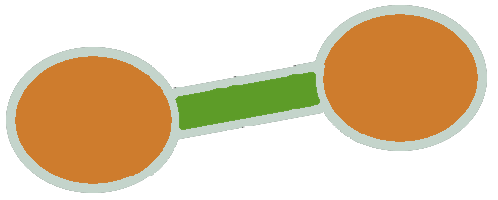Ninatoka
 concept
conceptGastrointestinal motility
Gastrointestinal (GI) motility focuses on digestive motor function and the transit of ingested material within the GI tract. Motility involves the coordination of smooth muscle and nerve function to mix, triturate, and propel products of digestion. While the esophagus, stomach, small bowel, and large intestine has its own specialized functions, all work collaboratively to aid in digestion and motility. Dysfunction, such as slow transit and hypo- or hypercontractility, in one of these anatomical regions can lead to a variety of symptoms. GI motility disorders, often chronic in nature, are an ultimate result of neuromuscular dysfunction and are associated with a severe impact on the quality of life and an increased health care burden. Symptoms of various dysmotility disorders include postprandial fullness, early satiation, nausea, vomiting, abdominal pain/discomfort, bloating, belching, dysphagia, regurgitating, and/or heartburn. GI motility and functional bowel disorders such as gastroesophageal reflux disease (GERD), irritable bowel syndrome, gastroparesis, and functional dyspepsia affect up to 25% of the US population and account for up to 40% of the GI problems for which patients seek medical care (http://www.motilitysociety.org/patient/pdf/Importance%20of%20GI%20Motility%20Disorders%201%2030b%202006.pdf). Significant advances in our understanding of GI motility and pathophysiology have been made, which have been applied to treatments. We will review the basics of GI motility and physiology, starting with the neuromuscular control, and the motility function of each anatomical segment, and the pathophysiology, which can lead to disease. Furthermore, we review clinical motility testing, which can help diagnose disorders specific to each region of the GI tract.
Ref:
B.C. Surjanhata, B. Kuo, Gastrointestinal Motility and Enteric Neuroscience in Health and Disease, Reference Module in Biomedical Sciences, Elsevier, 2014, , ISBN 9780128012383, https://doi.org/10.1016/B978-0-12-801238-3.00051-9. (https://www.sciencedirect.com/science/article/pii/B9780128012383000519)
Join Ninatoka!!
NinatoKa's goal is to support you as a therapist in unravelling the illness pathway from symptoms to cause, and to help you detect potential interventions.
Go to Explore to start your discovery!
Go to Learn to scroll through newly added data.
Go to Contribute to contribute to the Ninatoka database.
You can rate content up or down and add comments if you agree or disagree.



